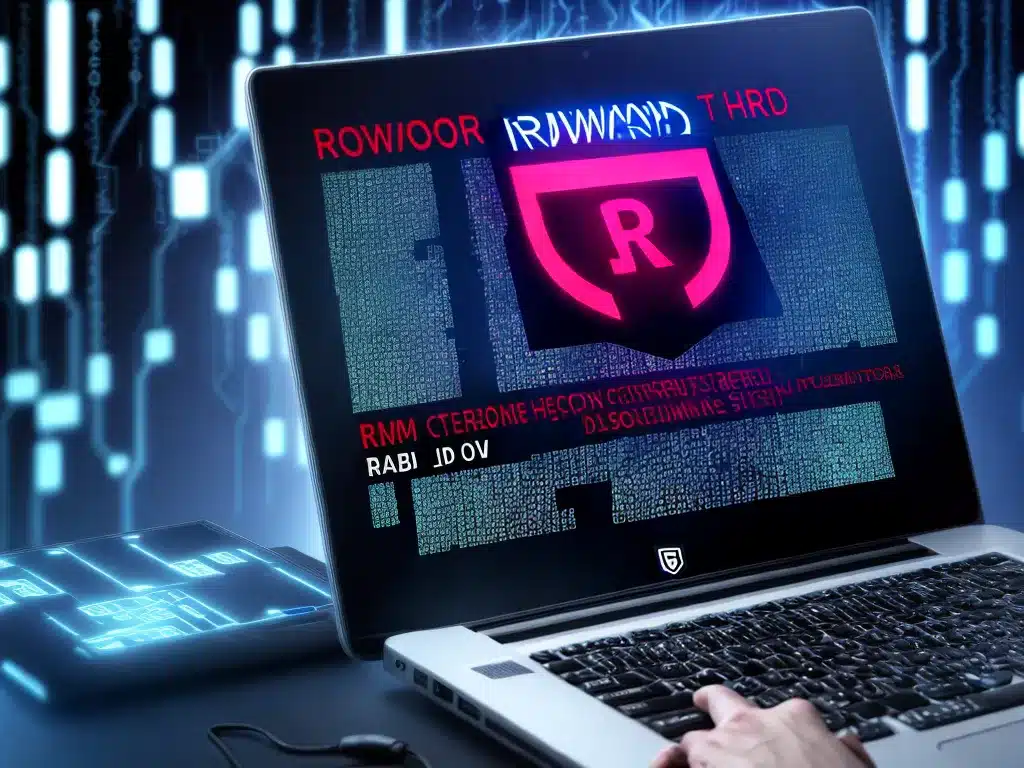
Ransomware attacks have unfortunately become more common in recent years. As an individual or business owner, it’s critical to understand how to respond if you become a victim. Proper preparation and action can significantly improve your chances of recovering encrypted or locked files after an attack.
Understanding Ransomware and How It Works
Ransomware is a form of malicious software (malware) that encrypts or locks computer files and demands payment for their release. The attacker typically demands payment in cryptocurrency, such as Bitcoin, to provide a decryption key that unlocks the files.
Ransomware often spreads through phishing emails containing infected attachments or links. Once executed on a system, it searches for and encrypts files such as documents, images, databases, and other critical data. The attacker holds the encryption keys hostage until their demands are met.
Backing Up Your Data
The best defense against ransomware is maintaining regular backups of your important data. Backups allow you to restore your files should they become encrypted by an attack.
I strongly recommend implementing a robust backup system or service that stores copies of your data both locally and in the cloud. This provides multiple options to retrieve your files.
Types of backups that help guard against ransomware include:
- Offline storage – Store copies on external hard drives disconnected from your network.
- Cloud storage – Services like Dropbox or Google Drive retain copies offsite.
- Continuous backups – Software that continuously backs up to local and cloud storage.
Testing your ability to restore from backups regularly is critical.
Securing Your Computer and Network
You can reduce the risk of ransomware by hardening your computer and network security:
- Keep all software up-to-date and promptly install security patches.
- Use antivirus software and a firewall.
- Enable spam filters and be cautious of suspicious emails and links.
- Back up data regularly as described above.
- Restrict access to network shares and drives.
- Use principle of least privilege for file permissions.
Employee education is also extremely important for identifying warning signs of phishing attempts or suspicious activity.
Responding to a Ransomware Attack
If you discover ransomware actively encrypting your system, quickly perform the following steps:
- Disconnect from any network and the internet, if possible. This can prevent further encryption.
- Identify the strain through the ransom note or antivirus alerts.
- Check for a decryptor – some strains have decryption tools available.
- Stop the ransomware process or service if you can safely identify it.
- Evaluate restoring from clean backups to avoid paying ransom.
Using a Decryption Tool
For some ransomware strains, free decryption tools are available that might restore your files:
- Check sites like No More Ransom for tools.
- Decryptors exist for strains like GandCrab, STOP Djvu, Phobos, and CrySIS.
- Carefully follow instructions for the specific decryption tool and ransomware variant.
However, decryptors only work for certain ransomware families, so may not be an option in all cases.
Paying the Ransom
Paying a ransom should be carefully considered, as it can encourage and fund criminal activity. There is also no guarantee your files will be recovered.
If you choose to pay ransom, I recommend:
- First try to negotiate a lower amount, if possible.
- Only pay after confirming decryption is possible.
- Use cryptocurrency like Bitcoin, not direct bank transfers.
- Check laws regarding ransom payments in your region.
Rebuilding After an Attack
If other recovery methods fail, rebuilding encrypted systems may become necessary:
- Wipe and reinstall the operating system to remove malware.
- Restore data from clean backups once the system is secure.
- Reset passwords and revoke application keys/tokens.
- Remove user access that is no longer needed.
- Patch vulnerabilities and improve defenses to prevent reinfection.
While expensive and time-consuming, rebuilding systems hit by ransomware may be unavoidable. Maintaining backups limits reliance on paying ransoms or rebuilds.
Summary
- Back up regularly and keep copies offline and in the cloud.
- Harden systems through updates, security software, careful access control, and user education.
- At the first sign of infection, isolate systems and check for decryptors.
- Evaluate all options like existing decryption tools and backups before considering paying ransom.
- Rebuild systems fully if decryption is not possible and recovery fails.
Preparing for potential ransomware attacks will greatly improve your ability to recover encrypted or blocked files. Taking preventative measures is critical to reduce your risk. But should your files become compromised, having reliable backups provides the best path to restore your data and resume operations.












